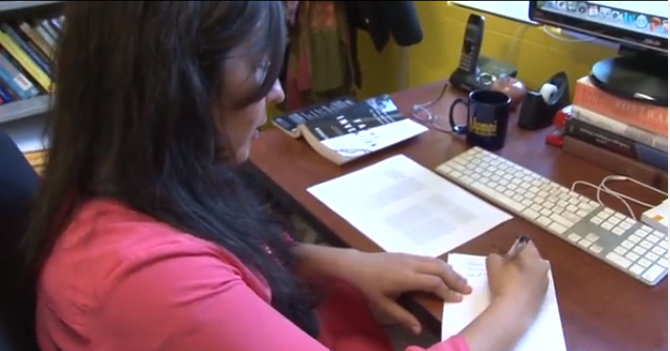LatinaLista — Mexican American author and UC Berkeley sociologist G. Cristina Mora never realized the diversity of “Hispanics” until she moved out of her Los Angeles neighborhood, where 100 percent of her neighbors were families who could trace their lineage back to different states of Mexico, to the East Coast where people mistook her for Puerto Rican.
It was during this time that she thought about the evolution of the Hispanic and Latino labels and how they’ve come to represent one group that is far from homogenous. In her book, “Making Hispanics: How Activists, Bureaucrats, and Media Constructed a New America” (University of Chicago Press), Mora explores how the different nationalities that fall under the “Hispanic” label were able to unite into one group and, in turn, increase their political and social clout with the government and corporate America.
In an interview with UC Berkeley’s media department, Mora answers a range of questions that explain her motivation to write her book and how her research lead her to understand the difference between “Latino” and “Hispanic.”
(The following is an excerpt from the UC Berkeley interview)
What’s the gist of your book?
It’s a story about people being disadvantaged, being a statistically reliable group and being consumers. All of these elements came together in an almost perfect storm in the 1970s when activists, the media and government bureaucrats learned how to work together to put out this pan-ethnic message.
How did this movement start?
It was the activists who first went to the Census Bureau and said, ‘You have got to create a category. You have got to distinguish us from whites.’ Up until that time, the Census Bureau mainly grouped Mexican Americans, Puerto Ricans and Cubans in the same category as Irish and Italian, and that became a real problem because it couldn’t show the government the poverty rates between Mexicans and whites. There was pushback on how large and how broad the category could be, but ultimately, a Hispanic category was established.
What do Hispanics have in common other than the Spanish language?
In many cases, they don’t even have that in common. You have the person whose great-grandmother came from Argentina, but has never visited Latin America, and does not speak Spanish, lumped into the exact same category as a Guatemalan who just crossed the U.S. border. One argument the book makes is that in order for all these government, market and political interests to come together, the category had to become broader in order to fit in all these ideas about Hispanics being consumers, or Hispanics being disadvantaged people.
Over time, the Hispanic identity has become based on cultural generalities such as ‘We all love our families. We are all religious and we all have some connection to the Spanish language however far back that may be.’ That’s a weakness and a strength. It was because of that ambiguity that we have the large numbers who identify as Hispanic and who have made advances. But when you have such a broad and opaque category it’s hard to elicit and sustain passion and commitment.



